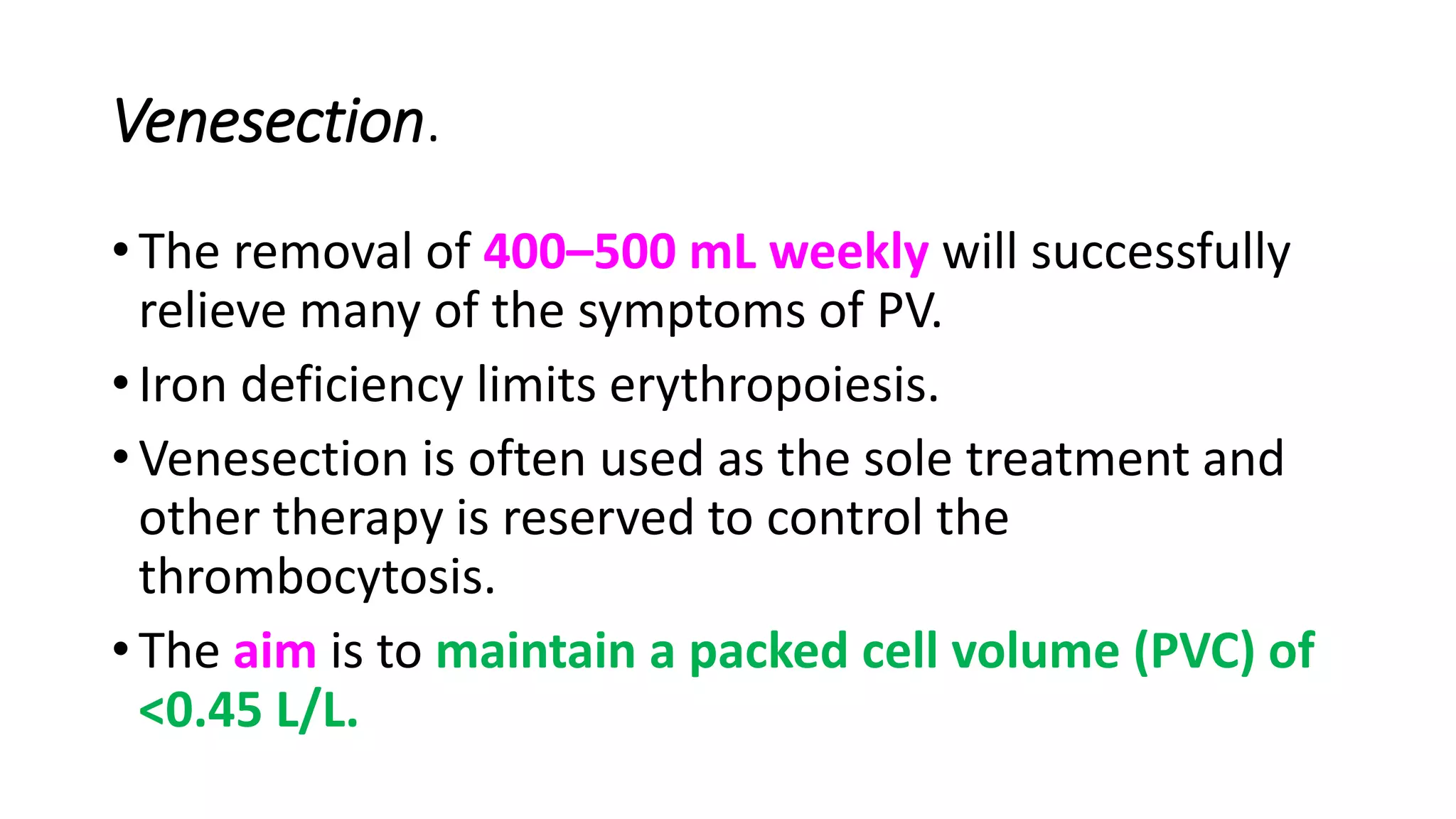Myeloproliferative disorders are characterized by uncontrolled proliferation of bone marrow cell lines, including conditions like polycythemia vera, essential thrombocythemia, myelofibrosis, and chronic myeloid leukemia. Polycythemia vera presents with increased red blood cell mass and is associated with specific clinical symptoms and complications, while essential thrombocythemia involves elevated platelet counts without significant changes in hemoglobin. Diagnosis and treatment of these disorders involve careful clinical assessment and management to prevent complications such as thrombosis and hemorrhage.





















































